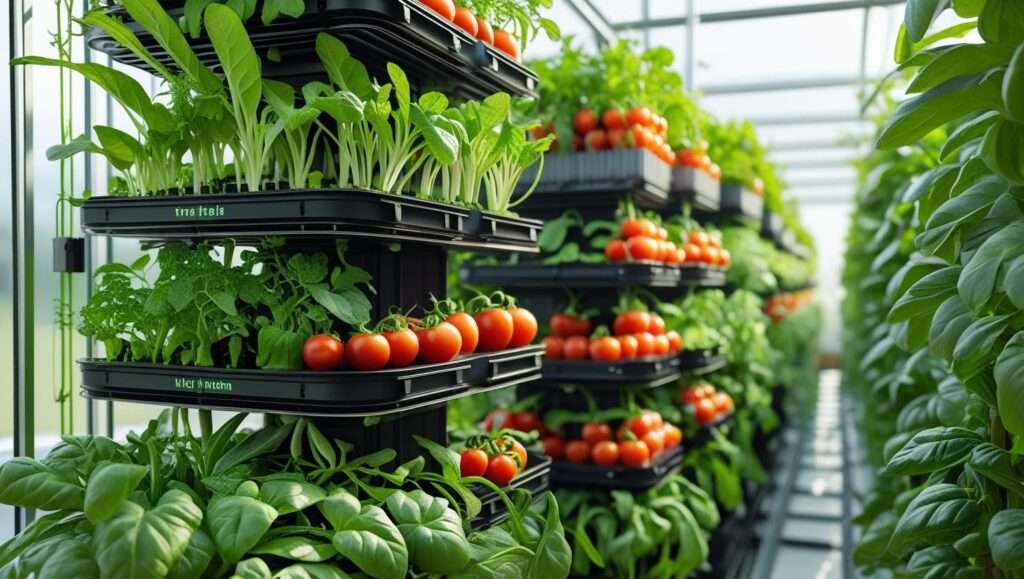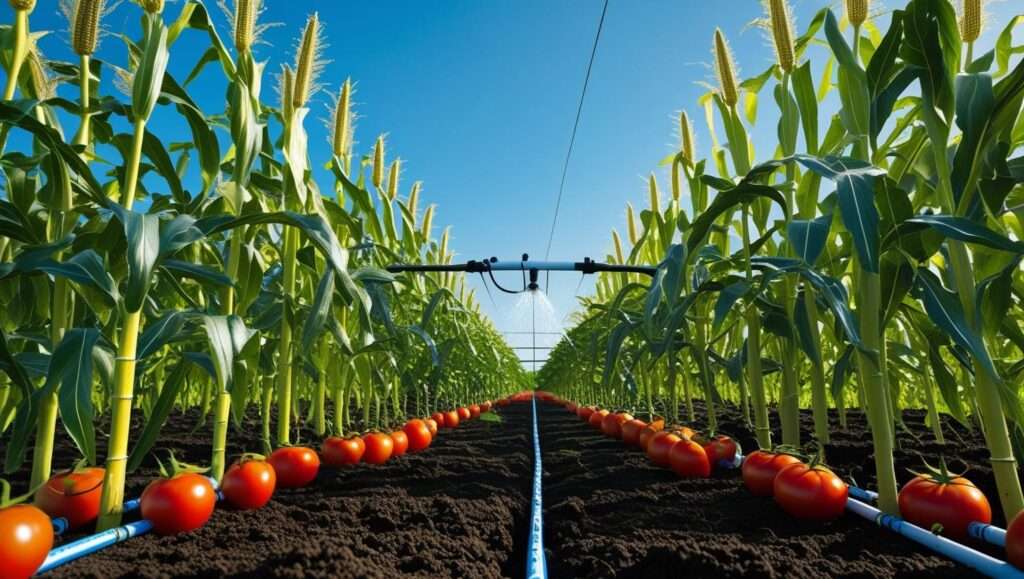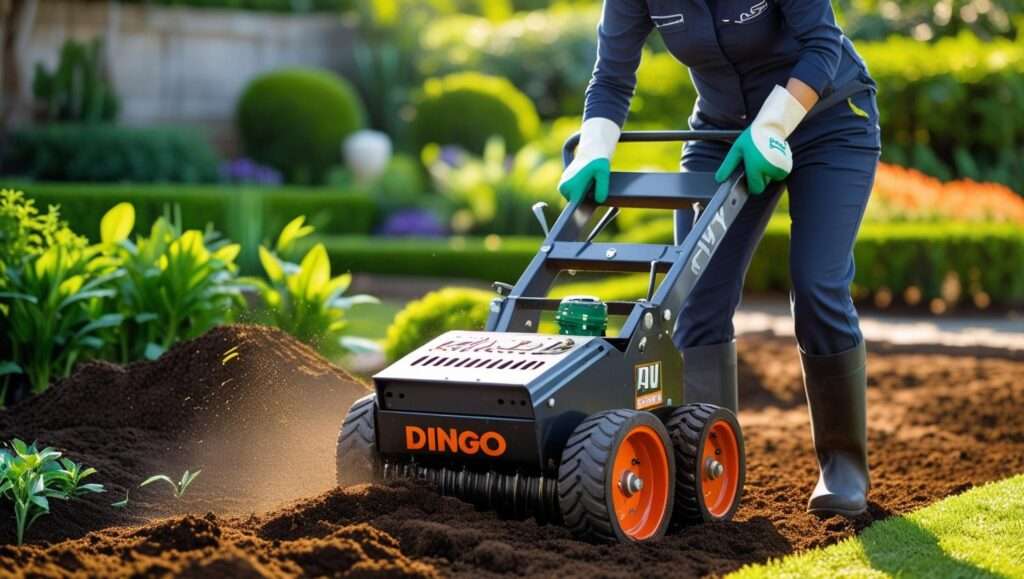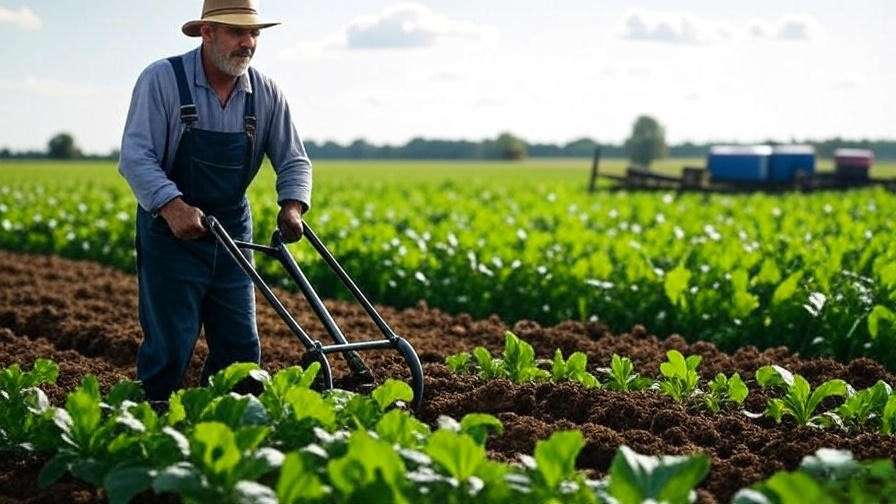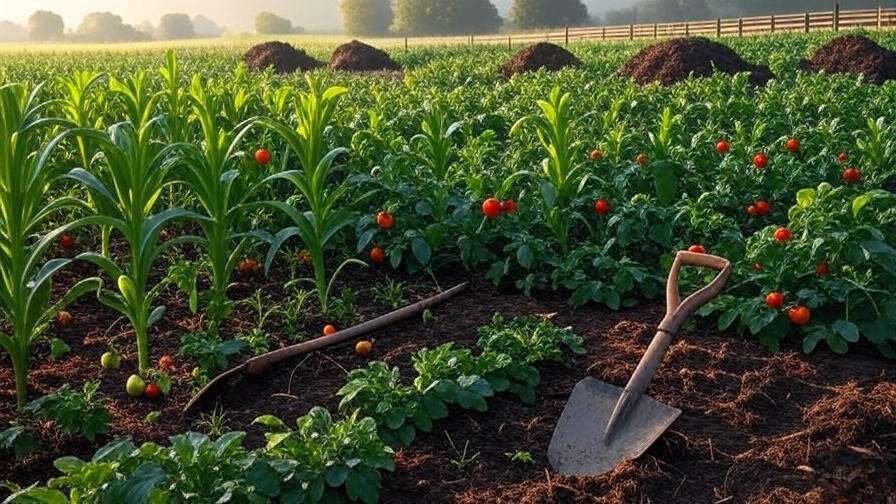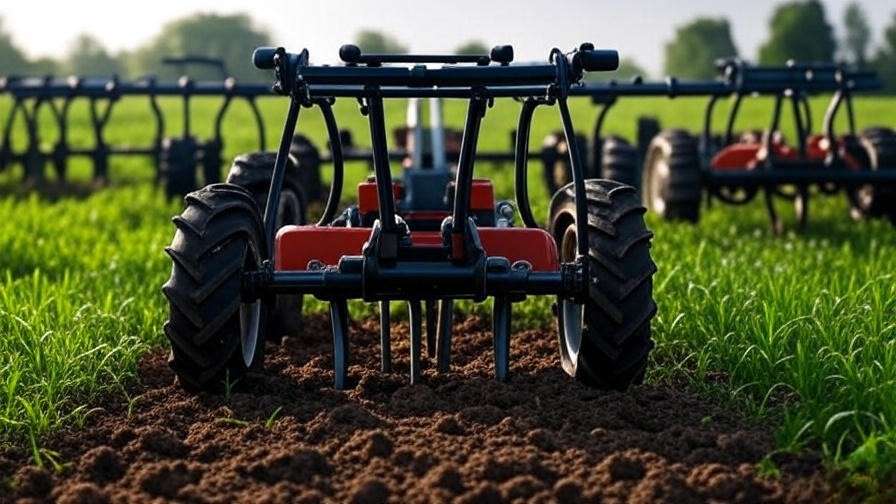Picture this: it’s planting season, and you’re battling compacted soil that’s choking your crops before they even sprout. Hours spent tilling with outdated tools or manual labor leave you exhausted, and your yields are suffering. Enter the soil cultivator attachment—a game-changer for farmers looking to streamline tillage, boost soil health, and maximize productivity. Whether you’re managing a small organic farm or a sprawling commercial operation, choosing the right soil cultivator attachment can transform your workflow. In this comprehensive guide, we’ll walk you through everything you need to know to select the perfect attachment for your tractor, backed by expert insights, practical tips, and data-driven recommendations from sources like the USDA and leading agricultural universities. Let’s dig in and unlock your farm’s potential.
What Is a Soil Cultivator Attachment and Why Does It Matter?
Definition and Purpose
A soil cultivator attachment is a tractor-mounted implement designed to break up soil, remove weeds, and prepare seedbeds for planting. Unlike standalone cultivators, these attachments connect to your tractor’s three-point hitch or power take-off (PTO) system, leveraging the tractor’s power to aerate soil, incorporate organic matter, and create optimal conditions for crops. By loosening compacted earth and improving soil structure, these tools enhance water retention, nutrient availability, and root penetration—key factors for healthy crops.
Benefits for Farmers
The right soil cultivator attachment can save hours of labor, reduce fuel consumption, and increase crop yields. According to a 2023 USDA report, proper tillage practices can boost yields by up to 20% by improving soil aeration and nutrient distribution. These attachments also minimize the need for manual weeding or multiple passes with less efficient tools, making them a cost-effective investment. For organic farmers, cultivators are essential for managing cover crops and maintaining soil health without synthetic inputs.
Common Use Cases
Soil cultivator attachments shine in a variety of scenarios:
- Preparing seedbeds: Create a smooth, well-aerated surface for planting grains, vegetables, or cover crops.
- Weed control: Uproot weeds in organic systems without herbicides.
- Residue management: Incorporate crop residues to enrich soil organic matter.
- Specialty farming: Maintain precise tillage in vineyards, orchards, or high-value crop fields.
From small hobby farms to large-scale operations, these tools are versatile enough to meet diverse needs.
Types of Soil Cultivator Attachments
Choosing the right type of soil cultivator attachment depends on your farm’s needs, soil conditions, and tractor capabilities. Below, we explore the most common types, their applications, and their pros and cons.
Rotary Tillers

Description: Rotary tillers feature rotating blades or tines that dig into the soil, breaking up clods and mixing organic matter. They’re ideal for primary tillage, where the goal is to prepare untouched or compacted fields.
Best for: Hard, compacted soils or new fields being brought into production.
Pros:
- Deep soil penetration (up to 8–10 inches).
- Excellent for mixing in compost or cover crops.
- Creates a fine seedbed in a single pass.
Cons:
- Requires significant tractor horsepower (typically 20–50 HP for a 5-foot model).
- Risk of over-tilling, which can harm soil structure if misused.
Disc Harrows
Description: Disc harrows use concave metal discs to cut and turn soil, making them suitable for secondary tillage after plowing or initial cultivation.
Best for: Smoothing seedbeds, incorporating crop residue, or breaking up moderately compacted soil.
Pros:
- Versatile across various soil types.
- Effective for large fields due to wider working widths.
- Adjustable disc angles for customized tillage.
Cons:
- Less effective on rocky terrain, where discs may wear quickly.
- Shallower penetration compared to rotary tillers.
Spring Tine Cultivators

Description: These cultivators use flexible, vibrating tines to aerate soil and uproot weeds without excessive soil disturbance.
Best for: Light tillage, weed control in organic systems, or maintaining soil structure in no-till or reduced-till farms.
Pros:
- Gentle on soil, preserving microbial activity and organic matter.
- Lightweight, requiring less tractor power.
- Ideal for precision tasks like inter-row weeding.
Cons:
- Less effective on heavy, clay-rich soils.
- May require multiple passes for thorough tillage.
Other Specialized Attachments
- Power Harrows: Use vertical tines for fine seedbed preparation, popular in vegetable farming and vineyards.
- Subsoilers: Designed for deep tillage to break up hardpan layers, improving drainage and root growth.
- Strip-Till Cultivators: Combine tillage and fertilizer application in targeted strips, ideal for precision agriculture.
Expert Tip: Use the following table to compare cultivator types at a glance:
| Type | Best Use | Tractor HP | Pros | Cons |
|---|---|---|---|---|
| Rotary Tiller | Primary tillage, compacted soil | 20–50 HP | Deep penetration, fine seedbed | High power needs, over-tilling risk |
| Disc Harrow | Secondary tillage, residue mixing | 15–40 HP | Wide coverage, versatile | Less effective on rocky soil |
| Spring Tine Cultivator | Light tillage, weed control | 10–30 HP | Soil-friendly, low power needs | Limited on heavy soils |
Key Factors to Consider When Choosing a Soil Cultivator Attachment
Selecting the perfect soil cultivator attachment requires careful consideration of your farm’s unique needs. Here are the critical factors to evaluate.
Tractor Compatibility
Your tractor’s specifications dictate which attachments are viable. Key considerations include:
- Horsepower (HP): A 50 HP tractor can handle a 5–6-foot rotary tiller, while smaller tractors (15–25 HP) are better suited for lightweight spring tine cultivators.
- PTO Requirements: Ensure the attachment’s PTO speed (e.g., 540 RPM) matches your tractor’s output.
- Hitch Type: Most cultivators use a Category 1 or 2 three-point hitch. Verify compatibility with your tractor’s hitch category.
Example: A Kubota B2601 (26 HP) pairs well with a 4-foot King Kutter rotary tiller but may struggle with a 6-foot model.
Soil Type and Conditions
Soil characteristics significantly impact attachment performance. Conduct a soil test (available through local extension services or USDA soil maps) to determine your soil type:
- Sandy soils: Lightweight cultivators like spring tine models work well.
- Clay soils: Require aggressive rotary tillers or subsoilers to break up dense layers.
- Loamy soils: Versatile and compatible with most attachments.
Pro Tip: Avoid tilling wet soils, as this can lead to compaction and reduced yields. Check soil moisture by squeezing a handful—if it sticks together without crumbling, wait for drier conditions.
Farm Size and Scale
The size of your operation influences attachment choice:
- Small farms (1–10 acres): Compact rotary tillers or spring tine cultivators are cost-effective and maneuverable.
- Medium farms (10–50 acres): Mid-sized disc harrows or power harrows offer efficiency without overwhelming smaller tractors.
- Large farms (50+ acres): Heavy-duty disc harrows or strip-till systems cover large areas quickly.
Budget and Maintenance
Soil cultivator attachments range from $1,000 for entry-level models to over $5,000 for premium, heavy-duty options. Factor in long-term costs:
- Initial Cost: Budget models like King Kutter’s XB series are affordable for small farms, while John Deere’s Frontier line offers durability for larger operations.
- Maintenance: Regular tasks include blade sharpening, gear oil changes, and bearing lubrication. Neglecting maintenance can lead to costly repairs or reduced efficiency.
Additional Features
Look for features that enhance usability:
- Adjustable Depth: Allows precise control for different crops or soil conditions.
- Hydraulic Controls: Simplify raising/lowering the attachment during operation.
- Quick-Attach Systems: Save time when switching between implements.
Expert Insight: Dr. John Hart, an agricultural engineer at Purdue University, notes, “Investing in a cultivator with adjustable settings ensures versatility across seasons and soil types, maximizing your return on investment.”
Top Soil Cultivator Attachment Brands and Models
Industry-Leading Brands
Several brands stand out for their quality and reliability:
- John Deere: Known for durable, high-performance attachments like the Frontier RT series.
- Kubota: Offers versatile cultivators compatible with their tractors, such as the TL1200 series.
- Land Pride: Popular for affordable, rugged models like the RTR12 rotary tiller.
- King Kutter: Budget-friendly options for small to medium farms.
Social Proof: Land Pride’s RTR12 series earns a 4.8/5 rating on TractorByNet, with farmers praising its durability and ease of use.
Recommended Models for 2025
Here are five top models for different needs:
- Kubota TL1200 Rotary Tiller ($2,500): Ideal for small farms with loamy soil; 4-foot width, suitable for 20–30 HP tractors.
- Land Pride RTR1266 Rotary Tiller ($3,200): Mid-range option for 30–50 HP tractors; adjustable depth for versatile tillage.
- John Deere Frontier DH1048 Disc Harrow ($4,000): Heavy-duty for large fields; 48-inch width, perfect for 40+ HP tractors.
- Tarter Spring Tine Cultivator ($1,800): Lightweight for organic farms; works with 15–25 HP tractors.
- Bush Hog RTS74 Power Harrow ($5,500): Premium choice for precision farming; ideal for vineyards or vegetable fields.
Where to Buy
Purchase from reputable sources like:
- Tractor Supply Co.: Wide selection of new attachments.
- Local Dealers: Offer personalized advice and service.
- Used Market: Check platforms like TractorHouse, but inspect for wear on blades and gearboxes.
Expert Tip: Visit the USDA’s Equipment Comparison Tool (available through extension services) to evaluate models side by side.
How to Use a Soil Cultivator Attachment Effectively
Pre-Operation Checklist
Before operating your cultivator:
- Inspect the attachment for loose bolts, worn blades, or leaks.
- Verify PTO and hitch connections are secure.
- Assess field conditions (e.g., remove large rocks, check moisture levels).
- Wear protective gear and keep bystanders clear of the PTO.
Operating Techniques
Maximize efficiency with these tips:
- Depth Settings: For clay soils, set rotary tillers to 6–8 inches; for sandy soils, 4–6 inches.
- Speed: Maintain 2–3 mph for rotary tillers and 3–5 mph for disc harrows to balance thoroughness and fuel efficiency.
- Overlapping Passes: Overlap by 10–15% to avoid missed spots.
Example: When preparing a seedbed for corn, set a rotary tiller to 6 inches and make two passes at 2.5 mph for a uniform, clod-free surface.
Post-Operation Maintenance

Extend your attachment’s lifespan:
- Clean soil and debris from blades and tines.
- Lubricate bearings and check gear oil levels.
- Store in a dry, covered area to prevent rust.
Expert Insight: Watch a tutorial from John Deere’s YouTube channel for visual guidance on cultivator setup and maintenance.
Common Mistakes to Avoid When Choosing or Using a Soil Cultivator Attachment
Mismatching Tractor and Attachment
Using an oversized attachment (e.g., a 6-foot tiller on a 20 HP tractor) can stall the tractor or damage the implement. Always check manufacturer specs for compatibility.
Ignoring Soil Conditions
Tilling wet soil with a rotary tiller can create hard clods, reducing yields. Wait for soil to dry to a crumbly texture before cultivating.
Neglecting Maintenance
Skipping blade sharpening or oil changes can lead to poor performance and costly repairs. Schedule maintenance before and after each season.
Expert Tip: Download a free pre-season inspection checklist from the University of Illinois Extension website to stay on top of maintenance.
Environmental and Economic Benefits of Proper Soil Cultivation
Soil Health and Sustainability
Proper cultivation enhances soil health by:
- Reducing erosion through better soil structure.
- Improving water retention, critical in drought-prone areas.
- Supporting organic farming by incorporating cover crops and reducing herbicide reliance.
A 2024 USDA study found that reduced tillage practices, supported by tools like spring tine cultivators, can cut soil erosion by up to 90%.
Cost Savings and ROI
Investing in a quality soil cultivator attachment pays off:
- Increased Yields: Better soil preparation can boost output, offsetting the initial cost.
- Lower Labor Costs: Automation reduces manual weeding and tillage time.
- Fuel Efficiency: Modern attachments require fewer passes, saving fuel.
Example: A $3,000 rotary tiller can pay for itself in two seasons by increasing yields by 15% and cutting labor costs by 20%.
Expert Insight: The USDA’s Natural Resources Conservation Service (NRCS) offers grants for sustainable tillage equipment—check their website for eligibility.
FAQs About Soil Cultivator Attachments
What’s the difference between a tiller and a cultivator?
Tillers are designed for deep, primary tillage, while cultivators focus on lighter tasks like weed control and seedbed preparation. Choose based on your tillage goals.
Can I use a soil cultivator attachment on rocky terrain?
Yes, but opt for spring tine cultivators or heavy-duty rotary tillers designed for rocky conditions. Remove large rocks beforehand to prevent damage.
How often should I replace cultivator blades?
Replace blades every 1–2 seasons for heavy use or when they show significant wear (e.g., dull edges or reduced cutting efficiency).
Are there financing options for purchasing attachments?
Many manufacturers offer financing, and USDA equipment grants may be available. Check with local dealers or the NRCS for details.
Conclusion
Choosing the perfect soil cultivator attachment is a pivotal decision for any farmer aiming to boost efficiency and crop yields. By matching the attachment to your tractor, soil type, and farm size, you can streamline operations, improve soil health, and achieve a strong return on investment. Use this guide to evaluate types, brands, and features, and avoid common pitfalls like mismatching equipment or neglecting maintenance. Ready to transform your farm? Assess your needs, consult local dealers, and invest in a cultivator that works for you. Share your favorite cultivator tips or questions in the comments below—we’d love to hear from you!




